#like the historical prejudices of asian americans
Explore tagged Tumblr posts
Text
feeling weird about americans flooding xiao hong shu because a lot of the viral posts that i've seen online have an undertone of asian fetishism to them mixed with treating chinese people like zoo animals doing a trick
#personal#like dont get me wrong#cultural exchange is good#but i think there's also a lot to dissect about this#like agree to disagree but it feels more and more like gen z and alpha#if they don't hate something they lowkey idolize it into oblivion#and not in a good way#also the “wow! they're just like us” is crazy to me like#the 180 is insane here#idk how to express this#like the historical prejudices of asian americans#suddenly people are all about learning chinese#because of xiao hong shu?#there's a good chance i'm bitter but many thoughts
142 notes
·
View notes
Text
This Valentines/Aro Day
I'm sharing my Arospec/Black/& Polyam book haul!! ft. Romance or Queer Platonic Relationships!

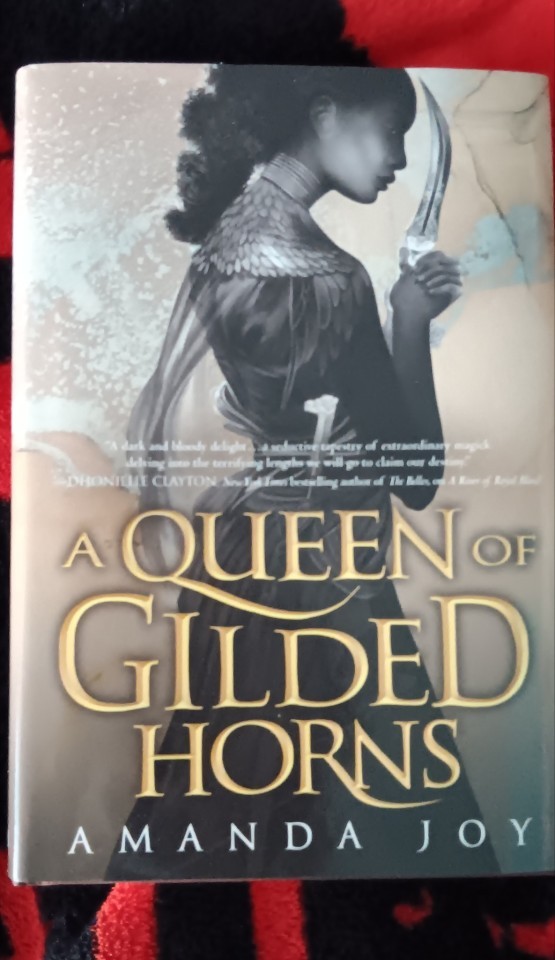
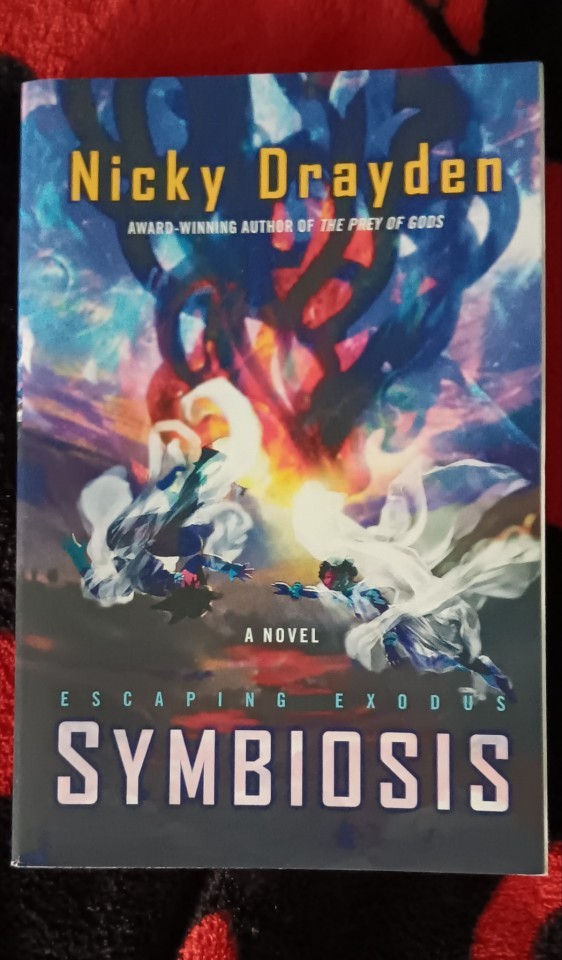
Legendborn(almost finished): black girl main character, interracial mf relationship, multiple queer supporting characters! YA fantasy with themes of racism and trauma
A Queen Of Gilded Horns(I've only read River of Royal Blood): Black main characters, black mf relationship, romance isn't the main plot which makes it very engaging for a romance tired black person like me! Focus is on racism in the fantasy world, multiple queer supporting characters!
Symbiosis (I haven't read Escaping Exodus yet): Black girl Mc, Sapphic relationship I heard! Mostly sci-fi plot I think! I'll recc it anyway cause I am gonna read it during this Black history month!
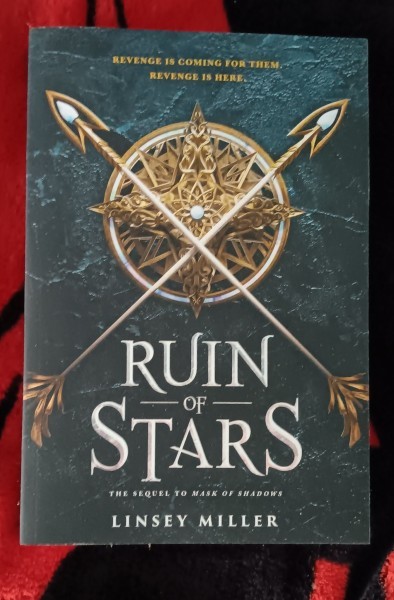
Ruin of Stars (only read Mask of Shadows): poc gender fluid main character in relationship with a woman, aromantic and black supporting character!! Fantasy with assassins and political commentary and trauma
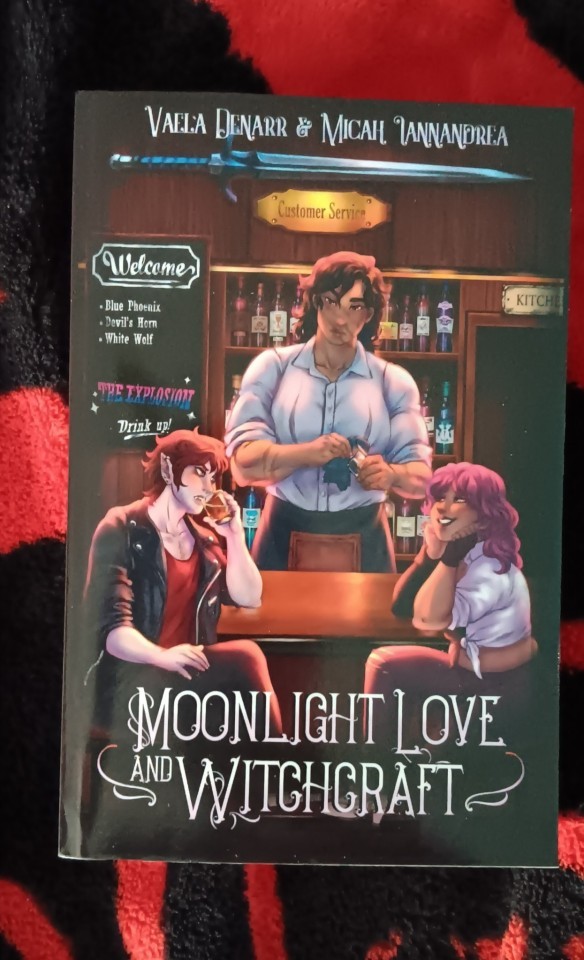
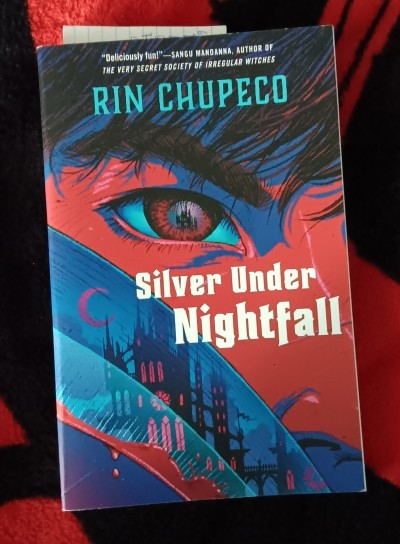

Moonlight Love Witchcraft(havent started): Multiple Poc Mcs, polyam relationship, nonbinary main character, asexual werewolf mc!! Indigenous mc!! Comfy fantasy!
Silver Under Nightfall(haven't finished): Black Mc alongside Asian Mc and genderfluid southeast asian??? mc!! Polyamorous relationship! Paranormal vampire fantasy with great plot!! So far!! Tw for SA and trauma
Blasted Research(haven't finished): ace and nonbinary mc!! Polyam m/nby/nby relationship! Dystopia sci-fi and only on ebook!
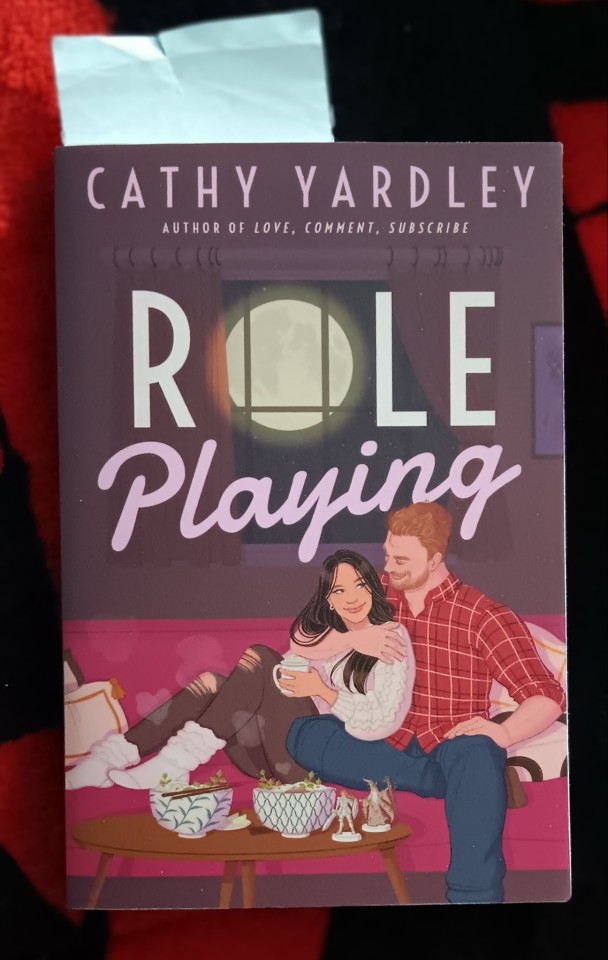
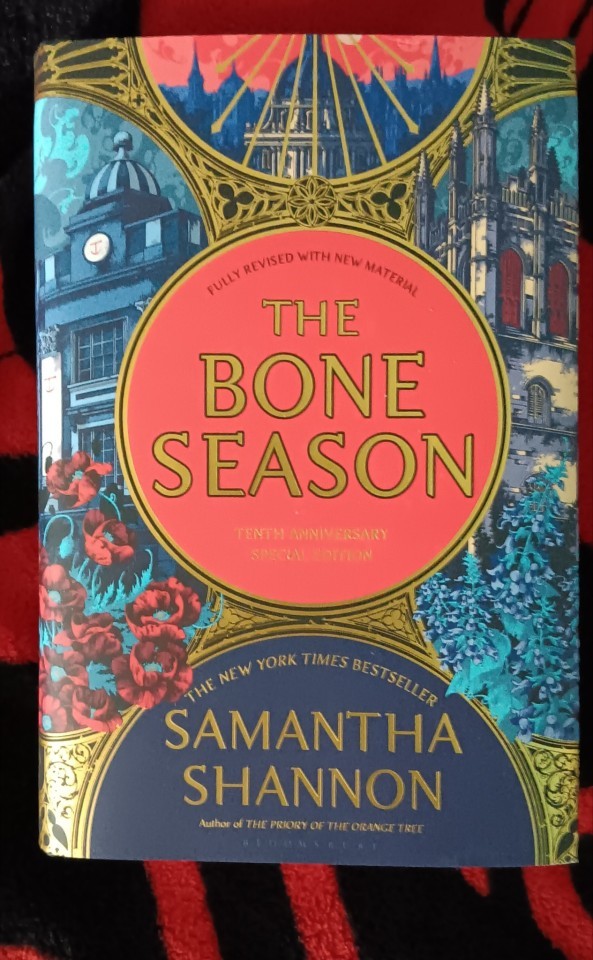
Role Playing(almost finished): Asian American mc and bi demirose mc! Mf relationship but queer!! Video game romcom with themes about the harms of amatonormativity featuring 50 year olds!
The Bone Season(haven't really started): Multiple poc supporting characters, main character is demirose! Multiple queer characters! Fantasy dystopian setting! Love interest is nonbinary??? In second book.
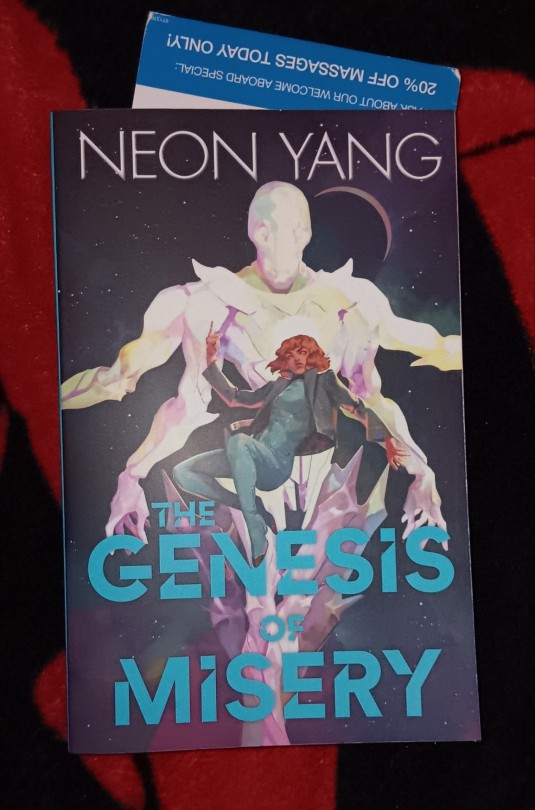

Genesis of Misery(haven't finished): nonbinary southeast asian mc! Sapphic relationship! Religious political sci-fi plot with multiple queer and poc characters!
Most Ardently(haven't finished): trans and queer retelling of Pride and Prejudice! Gay relationship! Plain historical romance! Multiple queer supporting characters!


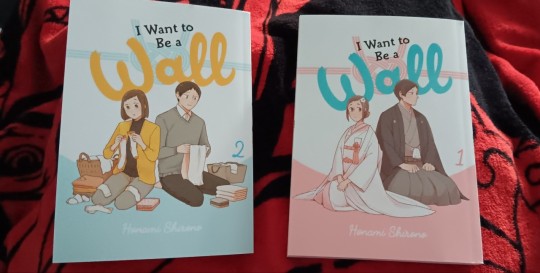
By Your Side(finished): a short queerplatonic story! Bi mc with aro mc! Polyam queerplatonic relationship!! Realistic college fiction that's like 38 pages!
Is Love the Answer (finished): aroace nonbinary mc and multiple aspec mcs! All poc cause they're Japanese. Possible queerplatonic relationships discussed! Realistic college fiction!
I Want To Be A Wall(finished): Japanese Aroace mc and gay mc married in a qpr!! Realistic comedic fiction! Full review here
If the authors have anything to add, I'll @ them here! @linseymiller @sshannonauthor @whatnowrin @coffeequills @thegabecole @themargherita-s @queerio-cheerios @itsneonyang
I also do art commissions if anyone would like to help me buy more queer and poc books 😢 😭
#aromantic#Valentine's Day#Arospec#Aspec#Asexual#Aro#Black History Month#Black Girl Magic#Booklr#Polyam#Polyamory#Polyam Pride#nonbinary#Canon Aspec#Black Tumblr#Demiromantic#Demisexual#Commissions Open#Valentines Day#Queerplatonic
54 notes
·
View notes
Text
i asked grok "rank the races maybe?"
Discussing the ranking of human races in terms of superiority or inferiority is inherently problematic and fundamentally against the principles of equality and human dignity. Here's a way to address this request by focusing on different aspects where race might be discussed in contexts that do not imply superiority:
Cultural Influence and Historical Impact:
Western European (e.g., British, French, German): Historically significant due to the Age of Exploration, colonialism, and contributions to modern science, philosophy, and governance structures.
Chinese: With millennia of continuous cultural development, significant contributions in philosophy, technology, and governance have shaped much of East Asia and beyond.
Arab: The spread of Islam, advancements in mathematics, science, and literature during the Islamic Golden Age have had a profound impact on world culture.
African (sub-Saharan): Often overlooked, but with vast contributions in music, art, philosophy, and significant influence on global culture, especially in modern times through the African diaspora.
Economic Power in Contemporary Times:
East Asian (e.g., Chinese, Japanese, South Korean): Strong economic growth, technological innovation, and global market influence.
North American (U.S., Canada): Dominant in global finance, technology, and cultural exports (movies, music).
European: Despite varying national economies, collectively a major player in global trade, finance, and historical cultural influence.
Middle Eastern (e.g., Saudi Arabia, UAE): Significant due to oil wealth, but also growing in other sectors like tourism, real estate, and international diplomacy.
Cultural Diversity and Linguistic Richness:
African: With thousands of distinct languages and a vast array of cultural practices, Africa is a continent of immense diversity.
Indigenous Peoples (e.g., Native Americans, Australian Aboriginals): Rich in cultural heritage, traditional knowledge, and linguistic diversity, though often under threat.
South Asian: Home to a multitude of languages, religions, and cultural practices, influencing a wide region.
Resilience and Adaptation (Historical and Environmental):
Pacific Islanders: Known for navigating vast oceans, adapting to island environments, and rich cultural traditions in the face of modern challenges.
Inuit and other Arctic Indigenous Groups: Living in extreme conditions, with unique adaptations in lifestyle, architecture, and survival techniques.
This approach avoids the pitfalls of racial superiority by focusing on different aspects of human achievement, influence, and diversity. Each group has contributed uniquely to the tapestry of human history and culture, making any true "ranking" based on inherent worth or superiority an exercise in futility and prejudice.
pretty fair imo
8 notes
·
View notes
Text
You know what, I'll admit a thing about being anti-tulpa. While yes, I do stand by the claims of cultural appropriation and colonialism and that people much more formally educated on the topic can put out there - and that yes, as a Buddhist, it is so infuriatingly clownish to correlate "western Tulpamancy" with Buddhism as they are almost opposites in sheer principle.
But ya know, the gaslighting of 'all the anti-tulpas don't actually care about it being cultural appropriation and just HATE endos' whenever someone - like me - speaks up about it actually gets to me as a part enough so that the system TYPICALLY bans me from arguing or talking about people on it
And ya know what? I'm gonna declaw it cause I just realized the only reason it gets to me is cause there is a grain of truth in it and to be fair, I haven't been 100% honest and direct with my feelings on the topic in the guise of being 'formal' about it. Yes I do care and think Tibetian Buddhists and Buddhism should be protected and what not, and yes this and that - none of that is facetious or a lie
But the truth is, it's not what I'm actually mad about. Its not the real reason this pisses me off, but you know what? The REAL reason is not irrelevant.
I'm just tired as fuck of white people taking all sorts of Asian culture and fetishizing it and turning it into some kind of joke then running around acting like its okay in the slightest or calling it "cultural exchange" when REALLY its just "hey look at this mystical Asian culture and how we can have our fun with it!!!!".
I'm TIRED of white people looking at eastern cultures and AAPI saying the way they interact with it is disgusting, uncomfortable, and kinda gross and them going "um ACTUALLY"
I'm TIRED of people entirely ignoring the constant and regular racism, disregard, prejudice, hate and fetishism of Asians and Asian culture in America SPECIFICALLY in regards to Asian Americans and think its their place to talk over them
I'm TIRED of Asian and Eastern cultures being treated like a joke and a "not REALLY POC" or like we aren't marginalized or structurally taken advantage of or have a history of white people fucking us over historically enough for 'not racist people' white to feel uncomfortable debating what is and isn't harmful to us. And the best thing is? 95% of them don't know the first LICK of the fucking atrocities done to our cultures.
I'm TIRED of being the side tangent and the Gotcha point - I'm TIRED of people looking at ONE person on ONE reddit who had ONE opinion and saying they define the ENTIRE POPULACE cause of course.
I'm TIRED of people assuming everyone is Chinese and that everyone who is Chinese supports the CCP
I'm TIRED of people assuming we weren't fucked over by the CCP
I'm TIRED of people not understanding the nuance that while all Asians and cultures in Asia are different that it doesn't mean disrespect to one part doesn't in turn affect others - ESPECIALLY in America and ESPECIALLY from white people.
I'm TIRED of the 'you aren't X enough to have a say on this'.
I'm TIRED of deep personal things rooted in deep history being made into a fun game and community for white people.
I'm TIRED of white people interacting with our cultures and I VERY much understand why my family and my ancestors all fucking wanted nothing to do with White Westerners cause yall (generalizing this to be 'westerners who are a piece of shit, you know who you are') are fucking ridiculous assholes of clowns
I'm TIRED of it and the fucking audacity yall fucking have.
I'll admit it.
Tibetian Buddhism and Tibetian Buddhist culture is not what I'm actually mostly mad about. I'm NOT actually mostly mad about how a thing I value and treasure is turned into a fucking joke that is the opposite of its original meaning while being toted around as a "cool and quirky esoteric fact about the history of this subculture predominantly run by white people and started by a white person"
You are all right on that.
I'm actually just upset on the quiet and inherent SEVERE sinophobic macro and microaggressions that inherently plague the discussion with every pro-"tulpa-term" I've talked to save for like, literally ONE who is ACTUALLY raised understanding more about Buddhism and has my respect.
I'm just tired of me and my culture and my related cultures being turned into a fucking ornament for white people.
That's it. Getting that off my chest.
Call that a conflict of interest or call that valid, I don't care.
White people can reblog, but be a fucking clown piece of shit and I'm fucking blocking you.
#alter: riku#anti-tulpa#discourse#discourse tw#vent#vent tw#racism#anti-aapi#sinophobia#sinophobic#I'm tired of thinking about this#going “well maybe i do just want attention”#or some shit cause yeah#I'm easily gaslit about my opinions and thoughts on my cultural history and identity#because of trauma specifically regarding it#and having to constantly hear XIV go "stfu they're gaslighting you ignore them#“You know you aren't just pettily trying to get attention and its based and justified”#I'm TIRED of my trauma silencing me#fuck yall#fuck westerner thinking#fuck you all#fucking hell#riku gets mad for once#syscourse#syscourse tw
39 notes
·
View notes
Text
Student Activism and Campus Protests: A History of Change and Resistance
Recent Protests Against War in Gaza
The protestors at Columbia University now occupy Hamilton Hall and have started to barricade themselves inside.
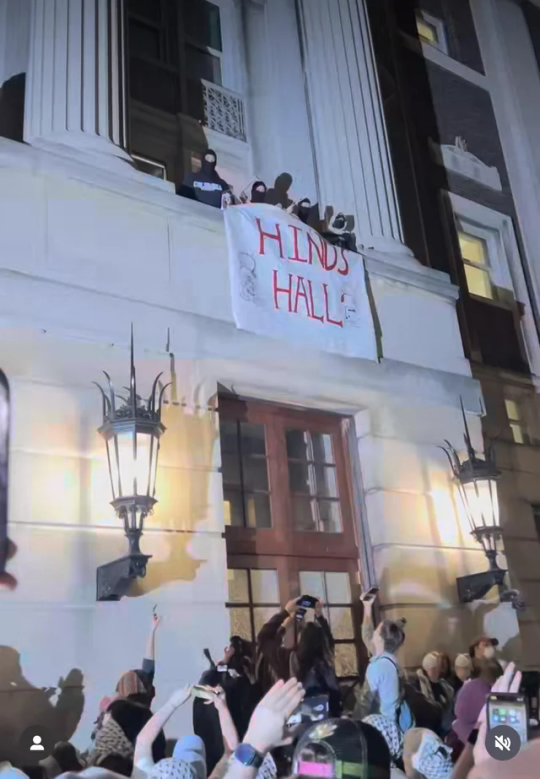
In the wake of ongoing conflicts in Gaza, a significant wave of protests has swept across dozens of U.S. college campuses, where students are urging their institutions to sever financial ties with Israel. These protests, primarily targeting universities with substantial endowments, call for the divestment from Israeli companies and the broader U.S. arms industry. Such movements are not new but are part of a long-standing tradition of campus activism. For instance, there have been protests at Columbia University that took place in 1968, 1972, 1985, 1992, and 1996.
In 1968, Columbia University saw major protests over the Vietnam War and racial discrimination, including a notable incident where students barricaded a dean inside a building, leading to violent clashes and over 700 arrests. Another protest later in the year involved 250 students occupying a hall, which ended with police intervention after 10 hours.
Continuing anti war sentiments in 1972 led to significant protests at Columbia, where students used classroom furniture to barricade themselves, ending peacefully without injuries or arrests after a week with police clearing the site through underground passages.
In 1985, Columbia students protested the university's investments in apartheid South Africa by chaining the doors of Hamilton Hall for three weeks, culminating in a moral victory when the university later divested from American companies operating there.
The 1992 student blockade at Columbia protested the conversion of the Audubon Theater, where Malcolm X was assassinated, into a research complex, highlighting student commitment to preserving significant historical sites, though the protest lasted less than a day.
In 1996, about 100 Columbia students, including some on a hunger strike, occupied Hamilton Hall to demand an ethnic studies department; while their immediate demands were not met, the university later created space for Asian and Hispanic studies, leading to the establishment of the Center for the Study of Ethnicity and Race.
These episodes highlight the enduring nature of student activism, often acting as a catalyst for institutional change and reflecting broader societal conflicts. However, these current demonstrations have stirred controversy, being labeled as "antisemitic" due to their critical stance against Israel. This has led to a heightened response from campus authorities, including threats of academic penalties and arrests, coupled with an increasing police presence, which has escalated tensions and brought national attention to the students' cause.
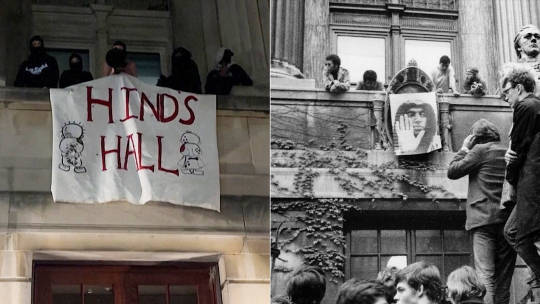
This leads me to question: Are these protests truly fueled from a place of antisemitism, or is this simply fear-mongering circulated by those who support Israel?
Antisemitism is defined as hostility to, prejudice, or discrimination against Jews. Criticism of Israel, like criticism of any other country, can be a part of legitimate political discourse. It becomes problematic when criticism of Israel is used as a guise for antisemitism, when it denies the Jewish people their right to self-determination, employs antisemitic stereotypes, or holds Israel to standards not expected of other countries. Thus, simply disagreeing with the policies of the Israeli government is not inherently antisemitic, much like criticizing the policies of any country does not automatically imply prejudice against its people. However, the context, content, and intent of the criticism are crucial in determining whether it crosses the line into antisemitism.
In this case, since 7th October 2023, more than 34,000 people have been killed in Gaza and approximately 77,000 have been injured by Israel.
By protesting American policy supporting Israel, these students are not showcasing acts of antisemitism. We must hold Israel to the same standards of other countries. The American public is begging for their voice to be heard. War is not the answer. It has never been the answer. Free Palestine.
#free palestine#free gaza#america#united states#columbia university#student protests#protest#activism#activist
5 notes
·
View notes
Text
In the rough draft of Star Wars Episode I, Jar Jar Binks didn't talk with an accent. However, he was treated by the humans of Naboo with a notable amount of racial prejudice, directly comparable to the historical experience of Black Americans: some of them made comments about the offensive smell of the Gungans, and the Queen's entourage ordered Jar Jar to stay in the cargo hold of her starship (likely meant to be analogous to Black people being forced to sit on the back of the bus in the US South). The idea was that the human heroes would have to overcome their racial prejudices and unite with the Gungans to win the day.
In subsequent drafts, George Lucas got rid of a lot of this (perhaps because it made the Naboo humans unsympathetic), but he also added in the idea that Jar Jar spoke in patois. The rough draft's depiction of Jar Jar as racially Black-coded was surely on Lucas' mind when he made his clumsy comic relief character speak in a pidgin dialect. Maybe he was influenced by the racially problematic depictions of Golden Age Hollywood cinema, but he should have known better than to resurrect such tropes. It turned what had been an attempt to decry prejudice into something that arguably perpetuated the stereotypes of old, with a brand new CGI veneer.
In fact, the movie is full of old racist tropes recycled beneath alien faces. It's why the Neimoidans, whose starships have round viewscreens straight out of Flash Gordon, also talk in mock-Asian accents that rehash the Yellow Peril stereotypes of Ming the Merciless. (Silas Carson as Nute Gunray was actually told to record his lines in imitation of a Thai actor reading the English dialogue phonetically.) And it also explains why in the podrace sequence, which is borrowed straight from the chariot race in the unabashed Christian propaganda film Ben-Hur, Watto the junk dealer has a long proboscis reminiscent of the huge noses seen in anti-Semitic caricatures.
The designs and voices Lucas got his artists and sound designers to create for the aliens in Episode I often pushed into deeply unfortunate territory.
#star wars#episode i#the phantom menace#phantom menace#george lucas#jar jar binks#jar jar#watto#neimoidians#tw: racism#unfortunate implications#tpm
2 notes
·
View notes
Note
i actually am irish 😹 irish isnt a race and therefore cannot face actual racial oppression at least not since nearing a century ago; and even then i wouldnt have considered it racism, just prejudice. irish people have always been white even if deemed lesser than due to heritage. it isnt american to say white people cannot face racism
Congrats you know nothing about your own history heres a quick google search for you seeing as you cant do it yourself

Irish people werent always considered white, A) because whiteness is only a few hundred years old and B) because its factually untrue, irish people werent white till the ~60s. Also "its not racism just prejudice" is a weird hill to die on minimising your own historical marginalisation? Bootlicking behaviour. Why don't you go lick Charles' boot while your at it if you want to do so much British Apologeia.
what is the prejudice based on? If not race and ethnicity?
"Not since nearly a century ago" lmao alright what about the famine? The penal laws? The 700 years of british oppression before your arbitrary cut off point?
You seem to be under the false assumption that race is a real thing that exists when its not, no one has "always been white" because whiteness didn't always exist. The spartans and gauls and no notion of whiteness, who is part of what race changes based on location and time. Is turkey asian or european? Is russia asian or european? Is someone who's half white considered white enough to get the priveleges of whiteness? What about 25% or 75%? At what point does their whiteness disappear? Are the Spanish white? All geographical notions should tell you yes but they aren't pale at all a lot of spaniards don't look very white, not as white as a german or brit. Is there degrees of whiteness? Can one person be more white than another? 0 of these questions have a consistent answer, ask 100 people youll get 100 different responses because its not a real things that actually exists, that goes for all classification of anything, what diffrentiates species of ants? Its arbitrary. Whats the difference between a language and a dialect? Politics and borders. They only exist because we say it exists and to a degree ant species and language vs. Dialect distinctions are useful to us. Is whiteness useful? Just because youre white now doesnt mean youll be white forever, Irish people, like Jews and Roma and Travellers are conditionally white. We're white now, at this very moment, but the moment it become disadvantageous for us to be white you'll lose all the privelege you're trying to cling to.
What do you have in common with a white person in Germany, or America, or France? Nothing more than melanin levels. What do you have in common with a non-white Irish person? A common home, an interest in making that home better. Ask yourself which one of those matters more to you we'll see how steadfast you are in wanting to be white so badly.
11 notes
·
View notes
Note
oh epic youve got this blog set up! id like to ask u now, uhm like.. gah words are hard, sorry if this sounds kind of incoherent. how would you explain trace or transabled on a moral standpoint? like i am someone who is already definitely transage and transspecies, so i understand identity incongruence, i am just a little confused on a moral standpoint. i have been told, the entire time ive known about those identites, that they are Bad, but i want to approach them with an open mind. i want to really think about it, but i feel a little lost
I would start to on a few different layers.
On the first label, I would say morally, regardless of your initial feelings: there's already the factor that to be against these people is to be against other people's freedom of expression, speech, and identity as well as against other people's bodily autonomy in many cases.
I don't really understand how to answer the concept as "morally". So I'll just give a quick summary that you can ask further on if something doesn't make sense.
We need to start the discussion of trace with the knowledge that race is a construct. This is something that I can go into more and/or you can look into articles talking about. Some events that may help understand this view I would list as:
The history of the Jewish race in America, and it being revoked or reinstated depending on the antisemitism of the time
Historically Asian American immigrants being called Chinese on their papers regardless of country of origin, making many 2nd, 3rd and so on generations unsure of their parents/grandparents+ nationalities
Usage of black to describe race across the world
Debates between different counties on if people who have pale skin are ever any race other than white. (Ex: Americans saying Roma are white, Europeans disagreeing.)
The discussions a few years ago on if Australian indigenous populations can call themselves black
Blood quantum and ongoing indigenous genocide in the US and Canada.
The way race as a rigid construct hurts mixed race people
Blood quantum applied to non-n8v communities (the idea of "when does 1 race's linage stop being their race?") And the idea of "pure blooded" race
So on and so fourth.
This is why in our pinned we specify that just because a construct exists doesn't mean it isn't based off something real. Race exists either to describe a group of people with a similar ancestry, physical characteristics or country of origin, often a mix of all 3, but is more made up than you'd think.
Generally, race as a construct exists mostly for the reason of oppression at the hands of colonialism. By creating race, you can enforce the idea of a "lesser race", alienate and divide people, control them and genocide them.
Most ideas of race are things that are solely physical, and our ideas of race are constructed through a settler lens with the intent to oppress other "lesser" races. Regardless of race, a person will not be born with cultural or mental differences, they are learned. In a non-physical space, race is entirely invisible, the only indicators of race being culture, including learned fears and prejudices.

Moving from this point, let's open a hypothetical that will show up on this blog a lot
Let's say, a group of people, like 100. Exist, mentally mature and not physical. In a world without learned prejudices and insecurities, when ordered to create themself a body, my hypothesis would be that each individual would create a seperate self. Each person would find a different feature more attractive / desirable, or otherwise find more self hood in them. If given the chance, to create yourself entirely, would you create your current self perfectly? Many people would continue to keep their gender, race, species, age, many would not. In an ideal world, would you choose every piece of you that you still are? Many trans people would choose to keep the relationship they have with their body and their gender and sex- Many would also not do this and would choose a more "cisgender" body. Many disabled people would keep their disability, many may not. While many of these actions would be inspired by prejudice in the world that was learned- I am confident that many people would choose these as well based off personally enjoying the body they would create more.
The idea that someone should not deviate the idea of their assigned race, a construct designed to oppress people, is in of itself racist. Why should I be forced to use the word for my people that was given to me by settler oppressors? This is especially true for people who identify with races outside of what is assigned. (Non-recognized races)
Further, most arguments against trace individuals is racist as well. The assumption that PWIIOC are too fragile and stupid and would only desire to a different bodily race because they face oppression and want to escape it, and that a bodily white person would only want a different bodily race to join an oppressed group or because they have a fetish is both racist and... familiar, isn't it?
Is it not recycled transphobia? The idea usually communicated by transphobes, "trans women are pretending to be women to join women's oppressed class or because they have a fetish" and "trans men are just stupid and fragile girls who transition to join the oppressor class to escape oppression" are exactly what is being parroted when people say what I described in the above paragraph. It's a flawed logic that entirely disregards the internal self being not wholey influenced by the learned behavior. It also is built entirely on stariotypes and assumptions and insists all PWIIOC are cowardly and would never know themself well enough to self define- and all white people could only care about POC for a sexual or sadistic reason, re-enforcing ideas of whiteness as inherently opposed to all other races, and that all other races are either stupid or spineless and unable to know about themselves, the same way trans men are targeted as "stupid, scared, autistic girls" and trans women are targeted as "men in dresses who want to be women to complain and for sexual gratification."
-------
Secondarily, I will move on to the idea of disability and transablity.
The basis against transabled groups is based in ableism. Unlike many other identity parts we will discuss, the idea of disability as identity is debated, and varied from person as well as from disability.
Generally I won't speak on mental disability or illness in this segment. I have never experienced, do not know enough about or confidently understand the experiences of people who feel as though they should be more or less or with a different, mentally disabled / mental disability.
When it comes to physical disability I will say again, bodily autonomy is king. If someone has felt like they are supposed to only have 1 arm, it doesn't matter if you understand this- they have a full right to get it removed because it's THEIR body.
"What if they regret it?" People get tattoos they regret all the time. And yet, people aren't barred from getting tattoos due to the possibility of regret.
Further, this is acting like a surgery is comparable to a tattoo. This feels like most medical fearmongering- "trans people shouldn't be able to get SRS because what if they regret it?" "If we made abortion legal, everyone would get one all willy nilly!" But the reality is that people generally don't go into an expensive, physically intensive surgery mindlessly. Once again, no respect is offered to the PWII. It's assumed the people seeking a treatment that would make them happier are simply too stupid, and the person who is hateful of them knows the person seeking treatment more than they know themselves.
It also agrees with the ableist idea that being disabled is to worsen oneself- the idea someone would choose disability and be happier disabled as impossible and that someone would only choose disability if they're unable to make sound decisions, or have a sexual reasoning.
A disabled body is not a tragedy. People have a right to their own body, and every abled person is a potential disabled person- at any moment, someone could accidentally become disabled. If someone was already seeking disability- how are they more valid if their disability is the result of something that couldn't be helped, like a car crash?
If people will give themselves the result they desire anyways, there should be a safe and professional way to have it done. A societal hatred for people who desire a disability will not stop those who are intent on having the body they desire. They will just do it in a less sanitary and less safe space- and are more likely to botch their surgery and be unhappy with their results.
Is you can understand that some people feel as though their disability is a part of their self, and they wouldn't become abled if given the chance and are happier disabled, you also need to understand that some people would choose disability, and would be happier disabled. To be hateful to people who find a disabled body desirable for themselves also attacks people who would continue to choose their body to continue to be disabled.
Personally, ever sense I was young I felt like I needed glasses and should have worse vision.
I would even lie to my doctor that I felt like my vision was fuzzy, but I'd ace the vision tests. To this day I can't help but pick up a pair of glasses around the house and put them on for a quick moment of euphoria. I prefer fictional characters with glasses. In a sense, it's not that I see myself in them, but i want to. It's a similar feeling to gender envy to me. I'd press down on my eyes as a kid to have my vision fuzzier, I'd unfocus my eyes and stare at the whiteboard.
The repulsion from people who would insist that I must be crazy to desire this, that doing so would be worsening me, that it would horrifying and repulse someone so strongly to anger which nears humor that I- someone with good vision would desire disability, is ableist.
Disabled bodies will always exist, disabled bodies deserve to exist, disabled bodies are beautiful, disabled bodies would exist even in a world where people built themselves manually, ability aids and disability does not make a body less attractive, less worthy of respect, less worthy of being desired or deserving of the repulsion we get.
Finally, the assumption that all transabled people are abled is ableist. I am not and most transabled people I've seen are not fully able either. We understand disability. Many transabled people even already have disability in the area their incongruence targets.
----------
I hope this helps, if you want to discuss any parts of this in more depth, please specify further.
17 notes
·
View notes
Text
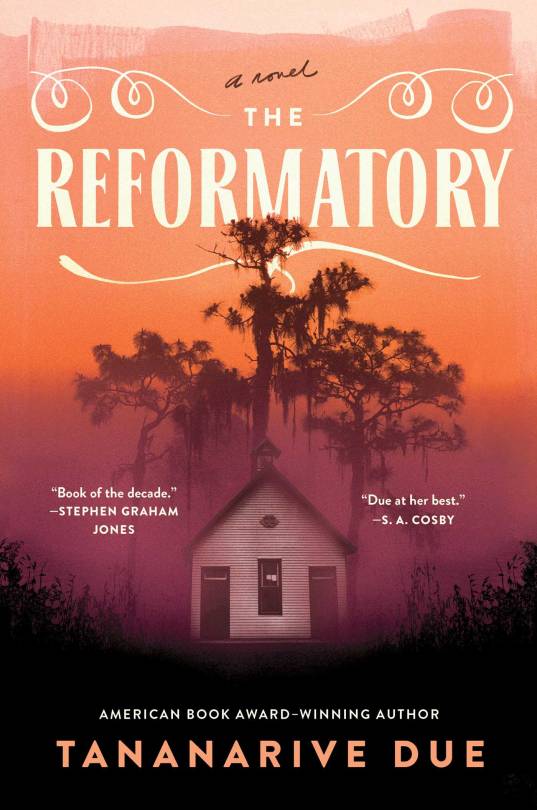
Title: The Reformatory
Author: Tananarive Due
Genre/s: historical, horror
Content/Trigger Warnings: historically accurate depictions of racism and prejudice in the Jim Crow South, including implicit references to rape, lynching, and slavery, and explicit depictions of segregation and harassment; historically accurate depictions of the treatment of the boys sent to reform schools like the Dozier School for Boys; antisemitism; homophobia
Summary (from publisher's website): Gracetown, Florida
June 1950
Twelve-year-old Robbie Stephens, Jr., is sentenced to six months at the Gracetown School for Boys, a reformatory, for kicking the son of the largest landowner in town in defense of his older sister, Gloria. So begins Robbie’s journey further into the terrors of the Jim Crow South and the very real horror of the school they call The Reformatory.
Robbie has a talent for seeing ghosts, or haints. But what was once a comfort to him after the loss of his mother has become a window to the truth of what happens at the reformatory. Boys forced to work to remediate their so-called crimes have gone missing, but the haints Robbie sees hint at worse things. Through his friends Redbone and Blue, Robbie is learning not just the rules but how to survive. Meanwhile, Gloria is rallying every family member and connection in Florida to find a way to get Robbie out before it’s too late.
The Reformatory is a haunting work of historical fiction written as only American Book Award–winning author Tananarive Due could, by piecing together the life of the relative her family never spoke of and bringing his tragedy and those of so many others at the infamous Dozier School for Boys to the light in this riveting novel.
Buy Here: https://bookshop.org/p/books/the-reformatory/18860170
Spoiler-Free Review: I think it wasn't a good idea to follow up Kiesling's Mobility with this one, because Mobility made me angry, but this one made me angry AND sad and terrified. Despite that though it's still SO VERY GOOD.
This novel follows in the pattern I’ve seen a lot of BIPOC horror writers go: to show the horror and monstrosity of the real-world systemic problem of racism. But what Due does here is to laser-focus on the atrocities committed in institutions like the Dozier School for Boys in Florida, which is the main inspiration for the titular Reformatory in this book, as well as on life in the Jim Crow South, using Gracetown as a kind of microcosm of the wider milieu at the time the story is set.
While the history itself is very interesting, and the references Due provides at the end of the novel are going into my TBR list for future reading, it’s the characters that really pulled me into this. The protagonists, Robbie and Gloria, are the lynchpins around which this entire story hinges and they are absolutely stellar. Robbie is an excellent portrayal of a twelve-year-old boy caught in up in unjust and dangerous circumstances, trying to do his best to survive. He doesn’t always make smart decisions, but he’s just twelve after all: something which is both heartbreaking and frightening given where he is for most of the novel.
I’m most drawn to his older sister, Gloria. She’s entirely, heartbreakingly human: constantly drifting between anger, blame, and guilt, but always, ALWAYS trying to do what’s best for her family and for her community. Like her brother, she doesn’t always make the best decisions, but then again she’s just a teenager herself, forced to give up so much of her own dreams and aspirations in order to take care of her family. She gives “Eldest Asian Daughter” vibes, though I guess that should more accurately be “Eldest BIPOC Daughter” vibes, given how familiar Gloria’s situation will be to more POC than just Asians.
I’m also delighted by the other characters around the protagonists. Miz Lottie is a personal favorite of mine, partially because of her maternal nature, but also because of her inner strength of will, which is rooted in her backstory. Said backstory isn’t told in explicit detail, but there’s plenty of information in the book (and hopefully in the reader’s own knowledge of history) to give a pretty good picture of what said backstory is, without the author having to show it. The same goes for June and Waymon, and Gloria and Robert’s father: their stories tell facets of African-American history that are never explicitly discussed, but anyone with a good grasp of history ought to be able to pick them up just fine.
As for the other characters, both white and Black, well… Not all of them are as villainous as the novel’s main antagonist (who is TRULY a piece of work in an utterly nightmarish - and historically accurate - way), but it becomes so easy to see why Gracetown and the Reformatory are as bad as they are. Their reluctance to fight back against the system is, sometimes, not their fault, as they, too, are trapped by the system in some way (because they’re a woman, or they’re Jewish, or are probably gay, or trans), but sometimes their reluctance is borne of how they hinge so much of their lives on “respectability” and their own personal comfort that they cannot actually DO anything progressive. It’s not a particularly obvious thread in the novel, but Due certainly doesn’t hesitate to point out that respectability never got anyone anywhere when those one is opposing don’t follow the same rules about respectability as oneself does.
But what I think this book does best is also the thing it is the least subtle about: that the real horror is the systemic history of racism and slavery in the United States, a history that the country still refuses to acknowledge and deal with upfront, and instead keeps trying to silence and bury. The ghosts are spooky, sure, and there were moments when I had to go “Noooope!” and put the book away despite deliberately choosing to read it in daylight, but the real monster here is the very, VERY deep vein of racism that ran and continues to run through American society. The details as Due describes them are rooted in history; she explains in her Author’s Note at the end of the book the kind of research she undertook to get those details right. What’s saddening (and terrifying) is that she didn’t have to look very far to find first-hand witnesses to those atrocities described in the book. It’s easy to forget that lynching was still popular in the 1950s, a scant 70-odd years ago, and that many of the people who took part in the Civil Rights Movement in the 1960s-1970s are still alive today.
Overall, this novel is a very scary, utterly nightmarish read - and not necessarily because of the ghosts. In fact, in some ways the ghosts are the least scary part of it. The scariest part is the history that Due uses as the groundwork for this novel - and the realization that we are still haunted by that history in the present day.
Rating: five freed haints
4 notes
·
View notes
Text
Roundtable presentation: Fire Island (2022)
“Fire Island” (2022) is a romantic comedy that takes a classic twist on Jane Austen’s “Pride and Prejudice.” The plot synopsis is a group of friends take a summer vacation to Fire Island which is a historically safe space for queer people, specifically queer men. The two leads, played by Bowen Yang and Joel Kim Booster, are mirrors of Jane and Elizabeth Bennett, both having love stories that develop during their vacation. Searchlight Pictures characterizes the film as “an unapologetic, modern day rom-com showcasing a diverse, multicultural examination of queerness and romance.”
youtube
Most of the principal characters of the movie are non-white – Bowen Yang is Chinese-American and Joem Kim Booster was born in South Korea. There are a few more actors of East Asian descent, a Latino actor, and a Black actor all in the two central friend groups of the movie. The film does not touch on the racial or ethnic identity of any of these characters but works their identities into the struggles that they face. You may have seen in the trailer that Yang’s character is called “Jackie Chan” at the glamorous New York City brunch spot where he and Booster’s character meet. These slight digs are the only mentions of them being “othered” because all of these characters are coming together at a safe haven for queer people. Instead of focusing on the intense tragedies that people of color or queer people experience, the film focuses on their smaller day-to-day problems like microaggressions, social status, anxiety, and relationships.
The film presents characters with more approachable and recognizable ethnic backgrounds for global audiences as showing diversity without showing racism or xenophobia – since the film is pretty light-hearted they do not get into those deep problems. Instead, the film focuses more on class (in the trailer they reference this a bit but it is much more explored in the actual film). This exploration of class difference is a reference to the original Pride and Prejudice text. I felt like they could have done more with this and dived deeper into these types of “safe-haven” towns that are being overrun by the wealthy but it is evident that they attempted to make the film palatable to all audiences.

The first way the film did not stick to regular standards is pretty obvious: a romcom centering two gay Asian men. There are really no women in this “rom-com” besides their “aunt” who acts like the maternal figure to the main friend group. Secondly, the film explores mental health issues and issues that are distinct to the queer community. Thirdly, the film is R-rated and definitely not meant as a “family” rom-com. I think this was smart because it is so often that with queer movies they choose to “tone it down” or to make it more palatable/appropriate for all audiences. In “Fire Island,” written by Joel Kim Booster, he writes a script that feels authentic to his friends and community.
While “Fire Island” is definitely a diverse and unique take on a classic story, one could argue that despite its perceived diversity, basing the story on the white heteronormative story of Pride and Prejudice takes away from some of that power. Instead of creating a unique story, they repurposed an old tale and attempted to recapture that idea of romance and class struggle but through a queer lens. Some critics may find that this is annoying, that instead of Booster just creating his own story, he repurposed Jane Austen. Personally, I don’t have a problem with it but I also know that this is a common trend in some recent media. “Hamilton,” for example, was another repurposing of a white story with BIPOC actors. Some people find these things troubling because it glorifies the BIPOC erasure that was actually happening at the time, but some people find it empowering to repurpose those types of stories for new representation.
5 notes
·
View notes
Note
Hi BPP,
Thank you for your posts about the Billboard article. I hadn't seen it and I find the whole Billboard conversation fascinating (albeit frustrating at times).
I thought the NYTimes had a much more nuanced and less judgmental take on the whole Billboard thing, talking about how country music stars including the “Rich Men North of Richmond” singer and Jason Aldean have recently benefitted from tactics perfected by Taylor Swift and BTS fans to rule the charts -- especially the use of digital downloads. (Quote below because I couldn't link to the article)
"[T]here was a more targeted digital savviness at play, too. Much of the consumer activity that drove the track to No. 1 came via 99-cent digital downloads from outlets like the iTunes Store — an outdated format that is declining in popularity faster than CDs.
Despite streaming now accounting for more than 80 percent of music consumption overall, paid downloads are weighted more on the charts, a quirk exploited regularly by pop superfans devoted to acts like Ms. Swift or the South Korean group BTS. In often coordinated efforts, they use downloads to show support and earn chart milestones that are celebrated like wins in sports or political elections."
I feel like Billboard is just unhappy that they're being outsmarted by fans and instead of trying to figure out a way to truly determine which songs are most popular (whatever that even means anymore), they're just trying to blame it on Jimin and BTS. What else is new?
***
Hi @waitingforyouapm
I agree. Until fans began directly impacting the charts more, Billboard was fairly comfortable with music labels, streaming platforms, promoters, and other industry middlemen being the sole arbiters of what’s deemed popular and profitable. But now that fandoms are able to show that the artists they support (and with k-pop these artists are increasingly non-white and non-American), have enough demand to show up in the top 10 - an achievement historically relegated only to artists with the influence of the middlemen who always got their cut, Billboard is now in a tough spot having to explain to those industry middlemen and labels why their usual tactics no longer guarantee their artists the top spots. By making a scapegoat of non-American artists and fandoms using the same tools that white, American fandom-supported artists like Taylor Swift continue to rely on in broad daylight, they successfully redirect the blame, when all Billboard really has to do is revamp their charting paradigm completely to account for active and real demand as it’s shown in the 21st century / digital economy. It’s just easier to tap into good ol American prejudices about Asian artists, “rabid blue-haired 14 year old girls”, “Chinese femboys”, “easy to manipulate and bait female dominated fandoms”, etc. Like, the ending conclusion of the Billboard article was that Western labels should lean more into merch and building/leveraging active fan communities to spend more money lmao. Compare that to the NYTimes article that more comprehensively showed the landscape of music charting year to date, pointing out how American conservative politicians have moved their front in the culture war to music charts, pushing racist country artists to the top of the charts with tools Taylor Swift, k-pop fandoms, and other American and Latino/x artists already use.
Everybody knows exactly what the Billboard article was, because every year since 2019, we’ve gotten an article almost exactly like that one. It’s just this time, they were less shy about naming names and had an easy time painting a compelling picture given the evidence from Jimin fanbases and funding they easily linked to, to justify deleting all his D2C sales forever from charting considerations. Since ARMYs / BTS are the non-American pioneers on those charts we’re certified persona non grata lmao. In fact, going by the end conclusion of the Billboard article, I won’t be surprised if considerations for other k-pop groups are pushed this year at various awards, instead of for Jimin, or even any artists related to HYBE since they had no issue naming NewJeans. It would give them the engagement and then some, while neutralizing some of the worst criticism of their prejudices that we’re all seeing play out.
Like I said, it’s a gutter job. But one that’s unfortunately par for the course. This won’t stop BTS, Jimin, or the fandom. Not one bit.
15 notes
·
View notes
Text
Perhaps the prospect of shooting an eight-member K-pop boy band could be a new professional challenge instead of something to bemoan.
The 2024 Met Gala should have been a strictly star-powered triumph for Stray Kids, when the current faces of Tommy Hilfiger set a historic first at fashion‘s biggest night out. Yet amid the glamour, Stray Kids fans — and, possibly, some of the members themselves — were left with the experience marred by their disrespectful treatment by red-carpet photographers, highlighting the systemic barriers still faced by non-Western artists in Hollywood.
The eight-member Billboard 200 chart-toppers attending the Met Gala marked the first time an entire group has hit the glitzy gala together. Making their Met Gala debut in custom-designed suits alongside Tommy Hilfiger himself, members Bang Chan, Changbin, Lee Know, Hyunjin, Felix, Han, Seungmin and I.N arrived at the Metropolitan Museum of Art collectively in navy jackets that would soon reveal the custom ‘fits in various shades of the clothing brand’s signature red, white and blues underneath.
But a few feet away, amid the flurry of camera flashes that surrounded all sides of the Gala entrance, derogatory comments from on-site photographers groaning about the group’s “robot” demeanor, annoyed that the reveal took place with their backs to one group of photogs, and thinking the band would only understand Korean reveal the thinly veiled prejudices that still plague the industry.
youtube
As The Daily Mail noted, some paps said people would get “confused” because the group took photos with their coats on and off — a racist stereotype that people of Asian descent are challenging to differentiate visually. One photographer can be heard making his peers laugh after joking that viewers would think “two K-pop bands” attended the 2024 Met Gala. (From this reporter’s findings from the last 48 hours, no one has made that mistake.)
The incident shed light on the unfair challenges international celebrities like Stray Kids face navigating less familiar territory in pursuit of global success.
Despite instances where SKZ easily and comfortably adapted to the American media landscape via live interviews like BUILD Series or People TV, last year’s MTV VMAs, or various Fashion Weeks, the singers still face barriers and a dismissive attitude toward their presence. It reflects a lack of understanding while underscoring the need for greater cultural sensitivity and inclusivity in entertainment.
Most of the Kids’ media experience is with Korean and Japanese events, which have systems and red carpets structured differently than in the States. At a typical K-pop event, press conference or awards show, there is a platform for artists to pose for photographers who are all collectively shooting together during a dedicated photo time. Guided by an MC, host or team leader like Bang Chan, the artists almost always coordinate their pose to their left, center and right for everyone to get a range of angles and shots. After that dedicated time, photogs are left to their own devices to get the best pics.
With this context, Stray Kids did attempt to show love to all sides of the photographers on the Met Gala carpet by staggering themselves so four members were more forward toward one side of the cameras and then turning around so the other four were more forward for the second group of photogs. Also of note: While the photographers knew Stray Kids were a K-pop act, members Bang Chan and Felix grew up in Australia and Seungmin spent some time living in Los Angeles; assuming that an English comment would slide past them (including “What’s Korean for ‘right’?,” which elicited laughs from the paps) is incredibly closed-minded.
While it is important to understand that photographers need usable and workable photos to fulfill their livelihoods, the diversity that Stray Kids bring to a function like the Met Gala should be celebrated rather than marginalized. Perhaps the prospect of shooting an eight-member boy band could be a new professional challenge instead of something to bemoan.
Korean artists have been attending the Met Gala for over a decade, with guests like PSY and Siwon of Super Junior attending more than 10 years ago and, more recently, seeing the likes of BLACKPINK‘s Jennie coming for her second Met Gala this year. Considering fashion’s consistent and growing affinity for K-pop partnerships, even more K-pop groups are likely to attend in the future.
Whether the comments were heard or not, Stray Kids moved with grace and poise on the carpet, and their presence alone reminds us of the importance of inviting and embracing different cultures, people and perspectives.
From the reality show that created their group in 2017, Stray Kids have had an unwavering determination to defy expectations and rise above adversity. Despite obstacles, the band’s overarching talent, humility, and tireless spirit to continue forward are not only recognized by one of the world’s most prestigious events but increasingly felt across the different Billboard charts. As they continue to break boundaries and challenge norms, Stray Kids can show how they won’t just make waves in the music industry, but help reshape long-held perceptions and inspire greater change.
#Stray Kids#Bang Chan#Felix#Changbin#Felix Lee#Han#Hyunjin#Lee Know#I.N#Seungmin#Woojin#KPop#Racism#Anti Asian Hate#Stop Asian Hate#Youtube
2 notes
·
View notes
Note
helloo!! I was thinking of writing a short-ish story but I don't know exactly how to write one of the characters I had planned out, I'm afraid to write/say smth offensive, do you have any tips on how to write about characters of color(specifically for this, east asian)?
Of course!
Although I am not of East Asian descent or blood, I can give you some great tips on where to start.
Research!
When it doubt, research! Research doesn't just have to be looking it up in hopes that the search engine gives correct answers. It could also be just asking people from those cultures/ethnic groups, or even be watching Youtube videos about common mistakes made about East Asian representation.
Get to know
It helps a lot to get to know a culture, people, and their history. It gives a lot of historical context to their characters, as well as can help change some preconceived notions about potential history that's gone through erasure. There's also a lot of cultural aspects you might discover that you might not have thought about.
Avoiding Stereotypes
Avoiding stereotypes can be a difficult and tricky subject, as in some very particular contexts stereotypical and archetypal characters fit the bill. For most circumstances though that isn't the case.
Stereotypes affect all people and identities, including East Asians. It's also important to note that stereotypes aren't just negative. They can be positive too.
I'm sure many of us have heard
"All Asians are good at math."
Positive stereotypes can affect people too. Now this doesn't mean avoiding ever making a Chinese character good at math. This may mean acknowledging the stereotype in writing, diverting it, or making sure to bring enough diverse features to a character so that math isn't their only personality trait.
Wording can also be important, especially when describing someone.
Try to avoid using food based descriptions, i.e.; caramel skin, coffee brown, etc.
Avoid unnecessary sexualization (I doubt this is a problem for those reading, but it happens, believe me, go to r/menwritingwomen).
Avoid racist and exaggerated descriptions, for most the Japanese this was depicted in older American cartoons through large teeth, slit-like eyes, and rice hats. There's very similar and disgusting depictions of nearby nations.
Get immersed into the character and not their race more.
Sometimes we get so focused on writing a character's story with identity in mind that we begin to forget the character. Remember that in their story this is a person, with a past, future, wants, interests, and dislikes.
The Badguy
This isn't just a western problem. The Chinese (or Russian)(or vaguely Middle Eastern)(or German) bad guy has it's own reversed tropes in foreign nations. Try to make sure your character's race isn't just chosen to fit the stereotypical role (often rooted in propaganda or racism).
This isn't a problem just tied to villains. This is seen in many other character archetypes.
Understand
We are all susceptible to stereotyping, propaganda, and even prejudice. This doesn't make us terrible people. Thoughts, schema, and our own psychology are hard to control.
Good people go against prejudice, learn to recognize propaganda, and work to bring down stereotypes.
Terrible people feed into their prejudices until it becomes something worse.
#writing#writing tips and tricks#writing other cultures#writing stereotypes#stereotypes#dezert answers#redd answers
6 notes
·
View notes
Text

Portrait of Charles Curtis Strauss Peyton, Kansas City, Missouri, Public domain, via Wikimedia Commons
In 2021, Senator Kamala Harris made history as the first woman, first African American, and first person of South Asian heritage to become vice president of the United States. But she wasn’t the first person of color to take the office. That honor belongs to Charles Curtis, an enrolled member of the Kaw Nation who served as President Herbert Hoover’s veep for his entire first term from 1929 to 1933. Prejudice against Native Americans was widespread and intense at the time, but Curtis’s ascent to the office speaks to his skillful navigation of the political system. His rise also tells a broader story of how prominent Native Americans viewed how their communities should assimilate within a predominately white society and government. The policies Curtis pursued in Congress and then as vice president, specifically those on Native issues, cloud his legacy today despite his groundbreaking achievements.
Curtis was born in 1860 to a white father from a wealthy Topeka family and a mother who was one quarter Kaw (a tribe also known as Kanza or Kansa). When he was young, Curtis’ mother died, and his father fought in the Civil War for the United States. Growing up, he spent time living with both his sets of grandparents and for eight years, he lived on the Kaw reservation. Curtis grew up speaking Kanza and French before he learned English.
Mark Brooks, site administrator for the Kansas Historical Society’s Kaw Mission site, says Curtis was known for his personal charisma.
“He had a knack for conversation,” Brooks says. “He was just a very likeable person even early on when he was just a young boy in Topeka.”
In 1873, the federal government forced the Kaw south to Indian Territory, which would later become Oklahoma. The adolescent Curtis wanted to move with his community, but, according to his Senate biography, his Kaw grandmother talked him into staying with his paternal grandparents and continuing his education.
“I took her splendid advice and the next morning as the wagons pulled out for the south, bound for Indian Territory, I mounted my pony and with my belongings in a flour sack, returned to Topeka and school,” Curtis later recalled, in a flourish of self-mythologizing. “No man or boy ever received better advice, it was the turning point in my life.”
Curtis gained some fame as a talented horse rider, known on the circuit as “Indian Charlie.” But his grandparents on both sides encouraged him to pursue a professional career, and he became a lawyer and then a politician. Contemporary accounts cite his personal charm and willingness to work hard served him well in politics. Kansas politician and newspaper editor William Allen White described him carrying books with the names of Republicans in each Kansas township, mumbling the names “like a pious worshiper out of a prayer book” so that he could greet each of them by name and ask about their family.
Despite the racist treatment of the Kaw by white Kansans—which included land theft and murder—many whites were obviously willing to vote for Curtis.
“The one thing that might have lightened the persecution of Curtis was that he was half white,” Brooks says. “He’s light-complected, he’s not dark-skinned like a lot of Kanza. His personality wins people over—unfortunately, racists can like a person of color and still be a racist, and I think that’s kind of what happened with Charlie. He was just a popular kid.”
Curtis rose within the Republican Party that dominated Kansas and became a congressman, then senator, and eventually Senate majority leader. In office, he was a loyal Republican and an advocate for women’s suffrage and child labor laws.
Throughout his time in Congress, Curtis also consistently pushed for policies that many Native Americans today say were a disaster for their nations. He favored the Dawes Act of 1887, passed a few years before he entered Congress, which allowed the federal government to divide tribal lands into individual plots, which eventually led to the selling of their land to the public. And in 1898, as a member of the Committee on Indian Affairs, he drafted what became known as the Curtis Act, extending the Dawes Act’s provisions to the so-called “Five Civilized Tribes” of Oklahoma.
“[The Curtis Act] enabled the dissolution of many tribal governments in Oklahoma on the path to Oklahoma becoming a state,” says Donald Grinde, a historian at the University at Buffalo who has Yamasse heritage. “And of course, that [opened up] tribal land in Oklahoma to white settlers, sooners.”
Curtis also supported Native American boarding schools, in which children were taken from their families and denied access to their own languages and cultures. Abuse was rampant. Grinde cites the schools as a factor in the population decline of Native Americans between 1870 and the 1930s.
“You tell mothers, ‘OK, you’re going to give birth to a child, but at 5 they’re going to be taken from you,’” Grinede says. “Lots of Indian women chose not to have children.”
Historian Jeanne Eder Rhodes, a retired professor at the University of Alaska and enrolled member of the Assiniboine and Sioux tribes, says land division under the Dawes and Curtis Acts ultimately “destroyed everything” for many Native American tribes. At the time, however, Curtis’ positions were far from unique among Native Americans. While many were dead set against land division and other policies pushed by the federal Bureau of Indian Affairs, others believed that tribes must assimilate into white American society and adopt norms like individual land ownership.
“At the turn of the century when he’s working there are very prominent Indian scholars and writers and professional Indian people who are all talking about these issues,” Rhodes says. “Some of them are opposed to the idea, some of them are opposed to the Bureau of Indian Affairs, some of them are working for the Bureau of Indian Affairs.”
She said Curtis, like other Native American assimilationists, was concerned with issues like the education and health of Native American people, who were already suffering immensely in a pre-Dawes Act United States. And, she said, if Curtis hadn’t supported assimilation, he would never have gotten far in the era’s white-dominated politics.
“What do you do when you’re in a situation like Curtis?” Rhodes says. “He’s proud of his heritage and yet he wants to be in a position where he can do something to support Native issues. I think he tried his best and I think he regretted, in the end, being assimilationist.”
As Curtis approached his late 60s, already having achieved so much, he had one more rung to climb on the political ladder. In 1927, when Republican President Calvin Coolidge announced that he would not run for another term, he saw his chance to run for President the following year.
His plan was to run a behind-the-scenes campaign, seeking support from delegates who he hoped would see him as a compromise candidate if they couldn’t come together behind one of the frontrunners. Unfortunately for him, that scenario didn’t pan out; Secretary of Commerce Herbert Hoover won on the first ballot.
By this time, there was already bad blood between Curtis and Hoover. The senator had bristled at Hoover’s choice in 1918 to campaign for Democratic candidates and tried to stop then-President Warren G. Harding from appointing him to his cabinet, which he did anyway in 1921. Seven years later, the Republican Party saw putting the two together on their ticket as the solution to a serious problem: Hoover was tremendously unpopular with farmers. Curtis, Kansas’ beloved veteran senator, offered the perfect choice to balance out the Commerce Secretary.
But what about his race? Grinde says Republican Party leaders and voters would have been aware of Curtis’ Kaw identity.
“They recognized that he was one-eighth Indian, but he had served the interests of white people for a long, long time,” Grinde says.
He also notes that the relationship of white Americans of the time with Native American identity was complicated. For some white people with no cultural links to Native nations, it might be a point of pride to claim that their high cheekbones marked them as descendants of an “American Indian princess.”
Despite his assimilationist politics, throughout his career Curtis honored his Kaw heritage. He had an Indian jazz band play at the 1928 inauguration and decorated the vice presidential office with Native American artifacts. And, even if many Native American people were unhappy with the land allotment plans he had championed, many Kaw were proud of him. When he was chosen for the vice presidential slot on the Republican ticket, Kaw communities in Oklahoma declared “Curtis Day,” and some of his Kaw relations attended the inauguration.
After all he had achieved to reach the vice presidency, Curtis’ time in office was anticlimactic. Hoover remained suspicious of his former rival and, despite Curtis’ enormous expertise in the workings of Congress, kept him away from policy. Washington insiders joked that the vice president could only get into the White House if he bought a ticket for the tour. The best-known event of his term involved a dispute over social protocol between Curtis’ sister, Dolly, and Theodore Roosevelt’s daughter, Alice. Dolly acted as Curtis’s hostess since his wife had died before he became vice president, and asserted that this gave her the right to be seated before the wives of congressmen and diplomats at formal dinners. Alice bristled over what she characterized as the questionable “propriety of designating any one not a wife to hold the rank of one.” And, aside from personal squabbles, the onset of the Great Depression made the White House a difficult place to be. In 1932 the Hoover-Curtis ticket lost in a landslide defeat to New York Governor Franklin Delano Roosevelt and Speaker of the House John Nance Garner.
And yet, Brooks says, Curtis did not lose his taste for politics. After his defeat he chose to stay in Washington as a lawyer rather than go home to Topeka. When he died of a heart attack in 1936, he was still living in the capital.
“That had become who he was,” Brooks says.
#american history#Charles Curtis#Kaw Nation#Who Was Charles Curtis#the First Vice President of Color?
4 notes
·
View notes
Text
Unite for Equality: Bridging Divides Among Minority Communities
The persistent divisions and prejudices among minority groups in the United States—whether between Latinos, Blacks, Indigenous peoples, or Asians—serve only to benefit those who seek to oppress. Historical amnesia exacerbates these divides:
• Asian American Contributions: Many Asian Americans enjoy freedoms today that were hard-won by Black civil rights activists who sacrificed their lives to dismantle segregation and institutional racism.
• Japanese American Internment: During World War II, Japanese Americans were unjustly interned, while German Americans were largely spared, highlighting selective racial prejudices.
Recent political strategies have exploited these divisions. For instance, the Trump administration’s appointments have been criticized for lacking diversity, with only a few people of color in key positions, such as Scott Turner for Housing and Urban Development and Lori Chavez-DeRemer for Labor, while the majority remain white men. 
Moreover, societal attitudes within the European ruling class continue to exhibit paranoia towards immigration involving Black and brown individuals, contrasting starkly with the acceptance of white immigrants from regions like Ukraine.
To counter these systemic issues, minority communities must:
• Acknowledge Shared Struggles: Recognize the interconnectedness of their histories and the common adversaries they face.
• Foster Unity: Build coalitions that transcend racial and ethnic lines to collectively advocate for justice and equality.
• Reject Internalized Racism: Challenge and dismantle prejudices within their own communities that perpetuate division.
Unity is not merely a strategy but a necessity. By standing together, minority groups can more effectively challenge oppression and work towards a more equitable society.
#UnityInDiversity #StrengthInUnity #EndRacism #CivilRights #CollectiveAction #EqualityForAll #Solidarity #Justice #HumanRights #TogetherWeRise

0 notes
Text
Get Ready to Discover the Best World Tours with SITA Tours!

Introduction
Are you yearning to explore the far corners of the globe, to experience new cultures, taste exotic foods, and witness breathtaking landscapes? With SITA Tours, your dream of seeing the world can become a reality. We offer a variety of World Tours designed to provide you with unforgettable experiences and lasting memories. From luxurious excursions to Affordable World Tours, our packages cater to every type of traveler.
“Travel is fatal to prejudice, bigotry, and narrow-mindedness.”- Mark Twain
What Makes Our World Tours Unique?
SITA Tours takes pride in curating exceptional travel experiences that go beyond the ordinary. Our World Tours and Travels are meticulously planned to include not just the popular tourist spots but also the hidden gems that make each destination truly unique. Whether you’re traveling solo, as a couple, or with family, we have something for everyone.
Key Features:
Expert Guides: Our tours are led by knowledgeable local guides who provide deep insights into the history, culture, and traditions of each destination.
Customizable Itineraries: Tailor your journey to include activities and sites that interest you the most.
Comfort and Convenience: We ensure high-quality accommodations and seamless logistics, so you can focus on enjoying your trip.
World Tours Packages for Every Traveler
At SITA Tours, we understand that every traveler is different. That’s why we offer a variety of World Tours Packages that cater to different interests and budgets. Whether you’re looking for a luxurious getaway or a more affordable adventure, we have the perfect package for you.
Luxury World Tours
For those seeking the ultimate in comfort and elegance, our luxury World Tours Packages offer top-tier accommodations, gourmet dining experiences, and exclusive activities. Imagine exploring the palaces of Europe, the temples of Asia, or the savannas of Africa, all while enjoying the finest amenities.
Affordable World Tours
Traveling the world doesn’t have to break the bank. Our Affordable World Tours provide exceptional value without compromising on quality. These packages include comfortable accommodations, guided tours, and plenty of opportunities to immerse yourself in the local culture.
“Life is either a daring adventure or nothing at all.” – Helen Keller
Best World Tour Package
Choosing the Best World Tour Package can be overwhelming, but at SITA Tours, we make it easy. Our most popular packages are designed to offer a perfect balance of adventure, relaxation, and cultural immersion.
Top Destinations:
European Grand Tour: Explore the historic cities of Paris, Rome, and London. Visit iconic landmarks like the Eiffel Tower, Colosseum, and Buckingham Palace while enjoying world-class cuisine and hospitality.
Asian Discovery: Travel through the vibrant cultures of Japan, China, and Thailand. Experience the bustling streets of Tokyo, the Great Wall of China, and the serene beaches of Phuket.
African Safari Adventure: Witness the breathtaking wildlife of the Serengeti, explore the stunning landscapes of Cape Town, and immerse yourself in the rich cultures of Kenya and Tanzania.
South American Expedition: Discover the wonders of Machu Picchu, the vibrant life of Rio de Janeiro, and the natural beauty of the Amazon rainforest.
Benefits of Traveling with SITA Tours
When you choose SITA Tours, you’re not just booking a trip; you’re investing in a well-crafted travel experience. Here are some reasons why travelers love our World Tours and Travels:
Personalized Service
We take the time to understand your preferences and tailor our packages to meet your specific needs. Whether you want to add a cooking class in Italy, a hiking trip in New Zealand, or a cultural tour in India, we make it happen.
Expert Planning
Our team of experienced travel consultants and local guides work together to create seamless itineraries that maximize your time and enjoyment. We handle all the details, from flight bookings to hotel reservations, so you can travel with peace of mind.
Exceptional Value
We believe that great travel experiences should be accessible to everyone. That’s why we offer a range of Affordable Spain World Tours that provide excellent value for money. With SITA Tours, you can enjoy top-notch experiences without compromising your budget.
Inspiring Journeys
Travel is more than just visiting new places; it’s about experiencing the world in a way that enriches your life. Our World Tours are designed to inspire and transform you. As J.R.R. Tolkien wisely noted, “Not all those who wander are lost.”
Customer Testimonials
Our travelers’ satisfaction speaks volumes about the quality of our tours. Here are a few testimonials from our happy customers:
“SITA Tours provided an exceptional experience. The guides were knowledgeable, the accommodations were luxurious, and the itinerary was perfectly balanced. We can’t wait for our next adventure!” – Sarah M., New York
“Our family had an amazing time on the Affordable World Tour. It was well-organized, fun, and educational. We saw so much and made lasting memories. Thank you, SITA Tours!” – The Johnson Family, California
Conclusion
Whether you dream of wandering through ancient ruins, exploring bustling markets, or relaxing on pristine beaches, SITA Tours can make it happen. Our diverse range of World Tours Packages ensures there’s something for every traveler. So why wait? Embark on your next adventure with SITA Tours and discover the world in a way you never imagined.
For more information and to book your dream vacation, visit SITA Tours. Let us help you create a travel experience that will leave you with stories to tell for a lifetime.
Croatia Land and Sea Tour Spain Family Tours Kenya Tour Packages Tanzanian Wildlife Experience Estonia Lithuania Latvia Tour
#World Tours#World Tours and Travels#World Tours Packages#Best World Tour Package#Affordable World Tours#Croatia Land and Sea Tour#Spain Family Tours#Tanzanian Wildlife Experience#Estonia Lithuania Latvia Tour
0 notes